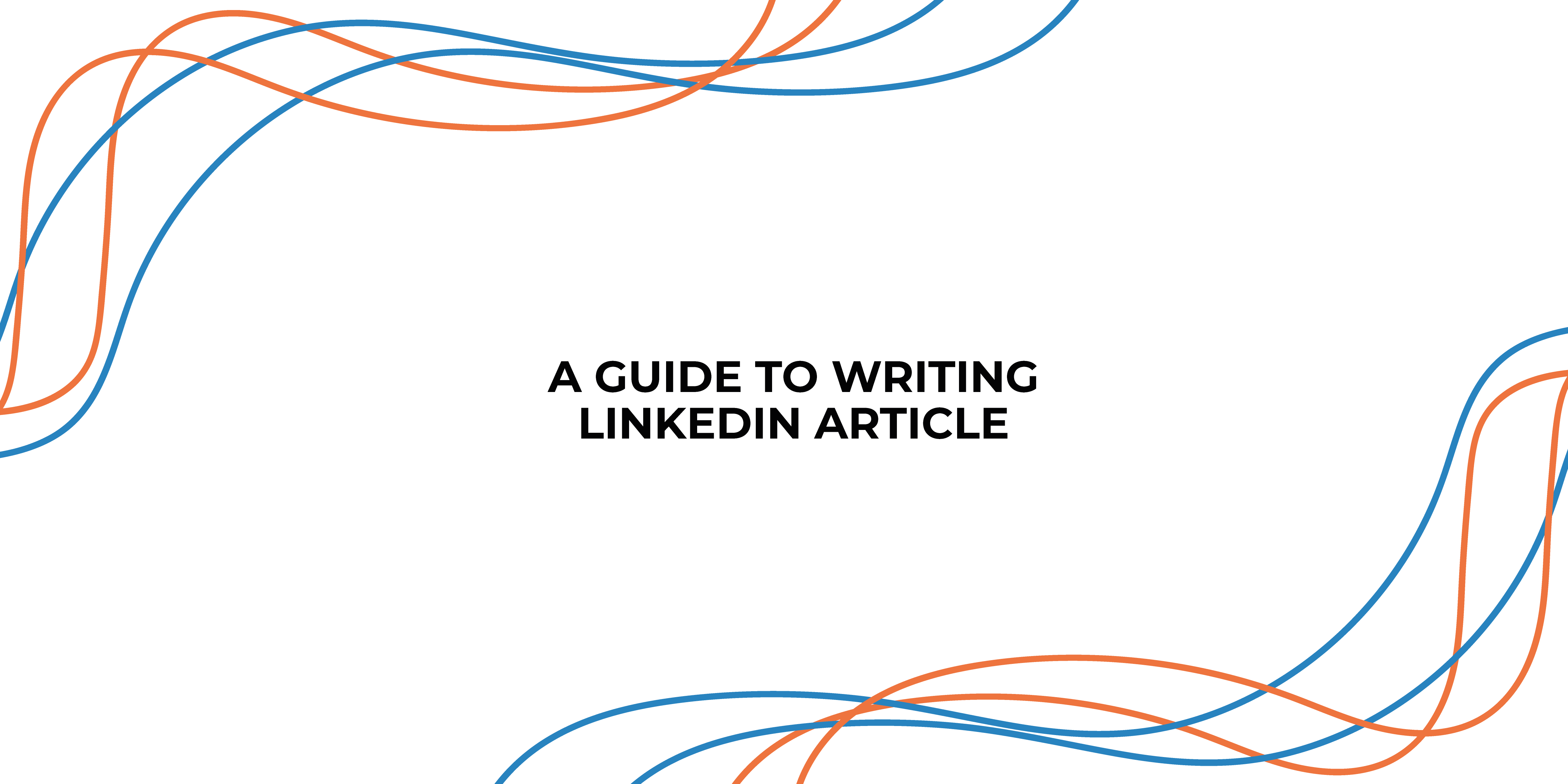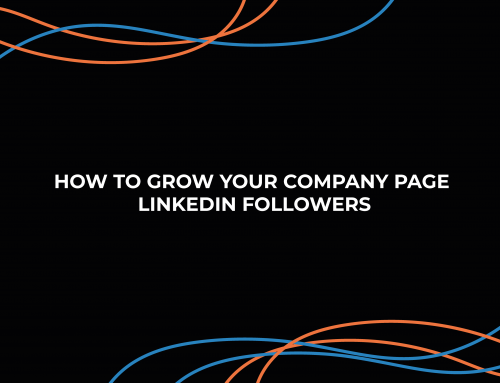In today’s digital age, professionals and businesses alike are constantly seeking effective ways to enhance their online presence, establish thought leadership, and forge meaningful connections. Amidst this quest for visibility and professional growth, LinkedIn articles have emerged as a powerful tool that offers a number of benefits.
LinkedIn, the world’s largest professional networking platform, has revolutionised how professionals connect, share knowledge, and showcase their expertise. While many users focus on optimising their profiles, expanding their network, and joining relevant groups – all of which bring considerable benefits – one often overlooked feature of LinkedIn is the ability to publish articles.
In this article, we will explore the untapped potential of LinkedIn articles and how they can be harnessed to elevate your professional branding and networking efforts. We will also share invaluable tips to help you maximise the potential of these articles and achieve outstanding results.
The advantages of LinkedIn Articles for individuals and businesses
First, let’s talk about the advantages of posting articles on LinkedIn, both for individuals and businesses.
LinkedIn articles offer individuals an excellent platform to enhance their personal brand, whether to further their career or establish themselves as experts.
By consistently publishing well-crafted articles, professionals can showcase their expertise, perspectives, and unique insights in their respective fields. This helps position them as thought leaders and influencers, earning respect and recognition from peers, colleagues, and potential partners.
LinkedIn articles provide businesses with an opportunity to showcase their organisational culture, values, and brand identity. By creating engaging and informative content, businesses can share their unique selling proposition and differentiate themselves from competitors. Sharing stories of success, community involvement, and industry insights helps build brand loyalty and attracts clients, customers, and partners who align with their vision and mission.
LinkedIn articles also allow businesses to demonstrate their expertise and establish themselves as industry leaders. By sharing industry trends, innovative approaches, and expert advice, businesses can position themselves as trusted authorities. This strengthens relationships with existing clients and attracts new prospects seeking guidance and expertise from industry leaders. Overall, LinkedIn articles serve as powerful marketing tools that drive business growth and expand the company’s reach within its target audience.
How to publish articles on LinkedIn?
Before we delve into the finer details of crafting compelling articles, it’s important to first understand the practical steps involved in publishing them. The good news is that anyone and everyone can easily publish articles on their personal LinkedIn profile.
However, if you wish to publish articles on your Company Page, you must be granted administrator access. This grants you the necessary permissions to represent your organisation and share valuable content with your company’s followers and network.
Now, let’s break down the actual steps involved in publishing articles on LinkedIn:
- Log in to your LinkedIn account to get started.
- Scroll up on the feed page until you reach the “Write an article” section, located as if you’re preparing to make a post, and click on it.Decide whether you want to publish the article on your personal profile or on your Company Page. This will depend on if you have admin access.
- You will be directed to the article page, where you can begin working on your content.
- Write an attention-grabbing headline that accurately represents the article’s content and captures readers’ attention.
- Choose an engaging cover photo that will appear at the top of the article and catch people’s attention as they scroll through their feeds.
- Write the body of your article, and remember to include a call-to-action (CTA) at the end.
- Once you’ve finished writing, take some time to review and edit your article for any necessary improvements.
- Click the “Publish” button located at the top of the page to make your article live.
- Write a captivating caption to accompany the post, including relevant hashtags.
- If you publish the article on your Company Page, notify your colleagues so they can share it, or reach out to close connections to like, comment, and share the post, thereby increasing its engagement.
By following these steps, you’ll be able to write, enhance, and publish your article effectively on LinkedIn.
How to write a successful LinkedIn Article?
Now that we have covered the fundamental steps of publishing articles on LinkedIn, it’s time to dive into the nitty-gritty of crafting successful and impactful articles. Writing compelling articles that resonate with your audience requires careful consideration of various elements, including content, structure, and engagement strategies. Let’s explore these essential aspects in detail:
Focus on bringing value
If you are a business owner, the temptation to write promotional articles about your own services may arise. However, it is advisable to avoid excessive self-promotion. LinkedIn users typically visit the platform to learn and find solutions to their problems. Therefore, it is best to provide informative content that adds value to their lives and careers.
Focus on offering insights, practical advice, or industry knowledge that can benefit your readers rather than overtly selling your products or services. By providing valuable and non-promotional content, you can establish yourself as a trustworthy authority within your field and build genuine connections with your audience.
When selecting a topic for your articles, choosing a subject that aligns with your area of expertise is crucial. Writing about a topic you are knowledgeable about makes the process considerably easier as you will feel more comfortable discussing it and will require less preliminary research.
Equally important is considering your target audience and writing about subjects that resonate with professionals in your industry. Reflect on your audience’s preferences and interests. For instance, if your target readers are software engineers, focus on topics directly related to their field and address their specific needs.
Finding a unique angle to approach your chosen topic is equally significant. This involves adding a fresh perspective to a popular subject, exploring novel ideas, delving into niche areas of expertise, or presenting captivating and engaging content that sets your article apart from others.
To discover interesting topics, you can follow several helpful steps. Paying attention to the conversations happening within your network provides valuable insights into relevant subjects. Engaging with friends, family, and colleagues allows you to tap into their interests, concerns, and ongoing discussions, providing you with a wealth of potential topics.
Another option is to keep an eye on social media trends. Platforms like Twitter, Facebook, Instagram, and TikTok often highlight trending discussions and hashtags, giving you a pulse on what people are currently talking about. By observing these trends, you can uncover subjects that resonate with a wider audience and potentially spark engaging conversations.
Setting up Google alerts for relevant keywords is another useful strategy. You can choose keywords that align with your areas of interest or expertise and receive notifications whenever new content related to those keywords is published online. This helps you stay informed about the latest developments, news, and discussions surrounding those topics.
These are just a few ways to generate interesting topic ideas that will likely capture your audience’s attention and provide valuable content on LinkedIn.
Conduct thorough research
When starting a writing project, whether it’s an informative blog post, an insightful opinion piece, or a research-based article, it is vital to gather information from reputable sources. These sources may include industry reports, academic studies, expert opinions, or well-established publications in the field. Relying on such reputable sources ensures that your present information is accurate, up-to-date, and supported by evidence.
One of the primary benefits of conducting thorough research is the credibility it brings to your writing. By utilising such sources, you are building a strong foundation of trust with your readers. When readers perceive your content as reliable, they are more likely to engage with it, share it with others, and consider you an authority on the subject matter. Credibility is especially important in fields where accuracy and expertise matter, such as science, finance, health, or technology.
It also adds depth and substance to your arguments. While personal anecdotes and opinions have their place, supporting your ideas with factual information strengthens your writing. Statistics, case studies, and research findings not only lend weight to your claims but also allow readers to evaluate and interpret the data themselves.
As you gather information, take thorough notes, and document your sources. This will not only help you organise your thoughts but also make it easier to cite and reference your sources correctly. Including backlinks to the sources you used in your article not only enhances its credibility but also aids readers in exploring the topic further on their own.
Including backlinks in your articles not only enhances credibility but also has the added benefit of improving search engine ranking. Search engines like Google value high-quality, authoritative content that provides value to users. When your article includes relevant and reputable backlinks, it signals to search engines that your content is well-researched and connected to trusted sources.
Search engine algorithms consider backlinks as a form of endorsement or recommendation from one website to another. When reputable websites link to your article, it is seen as a vote of confidence in the quality and relevance of your content. This, in turn, can positively impact your search engine ranking.
While backlinks can be beneficial for search engine ranking, it’s important to focus on providing valuable content first and foremost. Creating high-quality, informative, and engaging articles that meet the needs of your target audience should be your primary goal. When your content is valuable, other websites and content creators are more likely to naturally link to it, further boosting its visibility and SEO benefits.
Format it correctly
Proper formatting plays a significant role in making your article visually appealing, reader-friendly, and, ultimately, worth reading.
One of the key aspects of formatting is keeping sentences and paragraphs short. Lengthy, convoluted sentences can overwhelm readers and make the content difficult to follow. By using concise and straightforward sentences, you make your article more accessible and engaging. Aim to convey your ideas clearly and succinctly, allowing readers to absorb information effortlessly.
Similarly, breaking up text into shorter paragraphs helps readers navigate through the article more easily. Large blocks of text can be visually daunting and discourage readers from diving into the content. By dividing your article into smaller paragraphs, you create a sense of flow and provide visual breaks for the readers’ eyes. This approach facilitates readability and encourages readers to stay engaged with your article.
Another effective formatting technique is the use of subheadings. Subheadings serve as signposts, guiding readers through the different sections of your article. They provide a clear structure and help readers quickly grasp the main points of each section. Additionally, subheadings make it easier for readers to locate specific information they might be interested in, especially if scanning the article for relevant details.
Bullet points are another valuable formatting tool. For a few reasons:
- They allow you to present information in a concise and organised manner.
- Bullet points help break down complex ideas into digestible chunks, making it easier for readers to understand and remember key points.
- They also improve the visual appeal of your article, adding variety to the text and drawing attention to important details.
Incorporating photos and images within your article can significantly enhance its visual appeal and reader engagement. People are naturally drawn to visual content, and including relevant visuals can help convey your message more effectively. Images break up the text, provide visual context, and make the article more visually appealing. Ensure that the visuals you choose are relevant to the topic and of high quality to maintain professionalism and enhance the overall reading experience.
It is worth noting that people often scan articles before deciding to invest their time in reading them fully. This behaviour stems from the abundance of information available and the limited time people have. By formatting your article properly, you can capture the attention of scanners and entice them to read further. Concise sentences, subheadings, bullet points, and visuals make it easier for readers to quickly grasp the main points and decide that your article is worth their time.
When it comes to the length of your article, it is essential to strike a balance. While LinkedIn Articles allow for lengthy compositions, aiming for approximately 500-750 words per article is advisable. Remember, people are busy, and their attention spans are often limited. Providing valuable information within a reasonable word count increases the likelihood of readers engaging with your article from start to finish.
Promote your article
When it comes to creating and sharing valuable content, employee engagement can be a powerful asset for any organisation. Encouraging your colleagues to actively support your articles by liking, commenting, and sharing them within their networks can significantly improve the visibility and engagement of your articles.
First and foremost, employee engagement is essential because your colleagues are an integral part of your organisation’s network. They possess their own circles of influence and connections, both personal and professional. By encouraging them to engage with your articles, you tap into their networks, reaching a wider audience that may not have been exposed to your content otherwise.
In addition to liking, commenting, and sharing the articles, encourage employees to add their personal insights and experiences through comments or by sharing their own perspectives. This adds depth and authenticity to the discussions around the articles, making them more engaging for readers. By fostering a collaborative environment where employees can openly express their opinions, you create a sense of community and encourage ongoing dialogue around the topics presented in the articles.
If posting an article from your personal profile, you could ask close connections and friends to share as well as post it in groups you belong to. This can help amplify the article’s visibility and overall engagement.
In addition to organic promotion, LinkedIn provides a paid feature that allows you to boost the visibility of your articles. By investing in promoting your LinkedIn articles, you can significantly increase their reach and engagement, reaching a larger audience that may have otherwise been difficult to access.
Avoid using generative AI
With the rapid advancement of artificial intelligence, generative AI platforms like ChatGPT have emerged as powerful tools for various applications, including article writing. These AI models can produce impressive content, but it is important to recognise their limitations. While they offer convenience and efficiency, they have the potential to generate biased, out-of-date, or inaccurate content, often resulting in bland or boring articles that lack authenticity.
While generative AI platforms can generate content quickly, it is important to recognise that readers, especially those who are writers themselves or experts in your field, can often discern that AI wrote it. This can, in turn, impact your credibility and make you appear untrustworthy. Therefore, it is best to either write the article yourself or, if writing is not your forte, consider hiring a professional writer to do it for you.
Conclusion
There is, of course, much more to writing LinkedIn articles than this – this is just a basic guide to introduce you to the basics. Nevertheless, writing and publishing articles on LinkedIn brings many benefits and is well worth investing your time and energy in.





